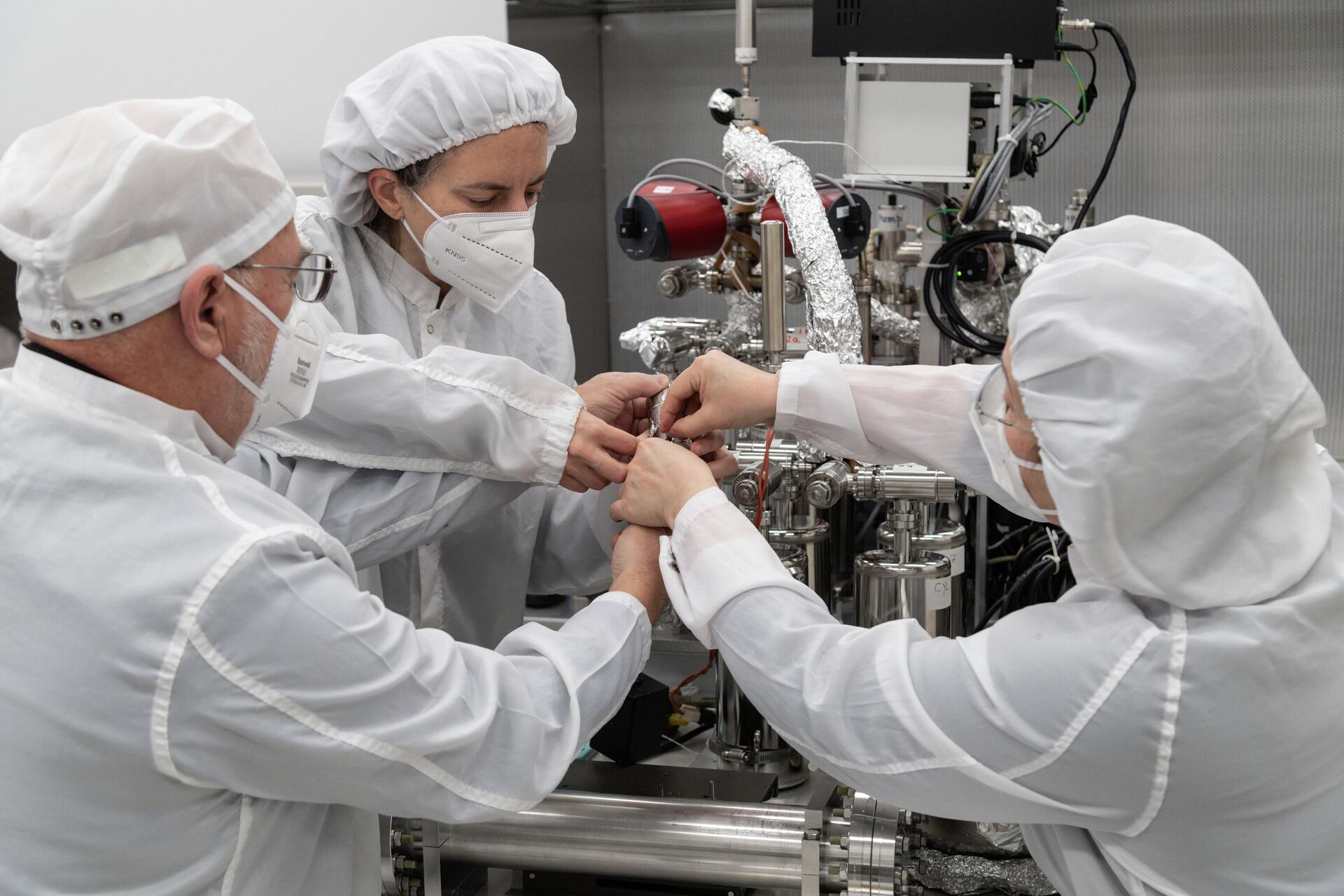Blast From the Past: NASA Unseals 50-Year-Old Lunar Samples

© NASA . James Blair - NASA - JSC
Subscribe
Work on the "new" old samples from the Apollo era is being led by the Apollo Next Generation Sample Analysis (ANGSA) programme in a bid to know more about the lunar surface before new missions to Earth’s natural satellite.
NASA decided to unseal never-before-opened Apollo-era lunar samples in order to prepare for a future return.
The samples were opened at NASA’s Johnson Space Center in Houston by the Astromaterials Research and Exploration Science Division (ARES). The reason for waiting so long is that NASA wanted technology to improve before studying the samples, and it appears that the time has finally come.
“Understanding the geologic history and evolution of the Moon samples at the Apollo landing sites will help us prepare for the types of samples that may be encountered during Artemis. Artemis aims to bring back cold and sealed samples from near the lunar South Pole. This is an exciting learning opportunity to understand the tools needed for collecting and transporting these samples, for analyzing them, and for storing them on Earth for future generations of scientists”.
The ANGSA programme was designed specifically to examine the "unopened and pristine" lunar samples. Back in 1972, astronauts Eugene Cernan and Harrison “Jack” Schmitt collected an Apollo 17 drive tube sample. They hammered a pair of connected 1.5-by-14-inch tubes into the lunar surface to collect segments of rocks and soil. Before bringing the samples back to Earth, the astronauts vacuum-sealed one of the drive tubes.
Only two drive tubes were vacuum sealed on the Moon, according to NASA. This is the first one to be unsealed.

From left, Dr. Juliane Gross, Astromaterials Research and Exploration Science Division (ARES) deputy Apollo curator, alongside Drs. Alex Meshik, and Olga Pravdivtseva, from Washington University in St. Louis, begin a gas extraction process using the manifold.
© NASA . James Blair - NASA - JSC
The samples could also contain volatiles (substances that evaporate at normal temperatures, like water ice and carbon dioxide), so the scientists were "excited" to try and extract the gas from them.
“A lot of people are getting excited”, said Zeigler. “University of New Mexico’s Chip Shearer proposed the project over a decade ago, and for the past three years, we’ve had two great teams developing the unique equipment to make it possible”.
After five decades of waiting, NASA has obtained the necessary equipment to extract and collect the gas. The device is called a manifold: it can pierce the container holding the lunar sample without letting any gas escape.
The scientific team began the gas extraction from the tube holding the sample in mid-February. It's a long process: first, the scientists need to open the outer protective tube and make sure that any gas inside it is captured, and then proceed to pierce the inner container in search of any lunar gas that hopefully remains there. After the gas extraction - likely later in the spring - the team will move on to explore the soil and rocks from the container.


